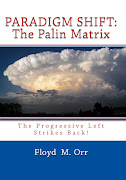
Honda created a model for the American market in 1962 simply named the Scrambler, a 250cc OHC twin with a single-downtube frame, cross-brace handlebars, a sleek gas tank, and the sweetest-howling upswept, crossover exhaust pipes in motorcycle history. The CL-72 continued through its 305cc iteration as the CL-77, beginning in '65, but a little brother was obviously needed for the exploding marketplace. The CL-160 was introduced to America in 1966, and in its official form at least, was built for only two model years.
All the original CL-160's had black frames with silver gas tanks, fenders, and side covers. There was a skid plate underneath the engine that blocked the access for an electric starter, so all models had kickstarters only. Unlike any other American-model Hondas, the CL-160 evolved into the CL-175 in an unusual manner. At the end of 1967, Honda dealers were shipped only CB-160's in the normal black, white, red, and blue colors for all Hondas. Dealers could order CL Kits to convert CB's into CL models prior to placing them on the showroom floor. This meant that in late 1967 and throughout '68, you could buy a new CL-160 that looked exactly like the original with the exception of the presence of an electric starter, the absence of a skidplate, and the availability of four colors. Some or most of these models also had body colored gas tanks instead of silver ones. (Maybe all of them did, but I cannot be sure about this.) This model evolved into the CL-175 with the color choices replaced by black, candy blue, and candy orange in 1968, and the CL-175 continued to evolve until it became the K4 model in 1970, at which time its styling finally became mostly identical to all the other Honda Scramblers of that year.
The original, black, kickstart CL-160 with its skidplate has become a legend in its own time, a model sought by collectors as a very special Honda. Its 282 pounds offered a compact alternative to its larger 305cc, 350cc and 450cc brothers, while its sixteen horsepower OHC twin offered considerably more adult hauling power than its little tiddler siblings. The CL-160 filled a very entertaining niche in the on and off road motorcyle market. I wish I had one now!
Watch for the new book by Floyd M. Orr, The Tiddler Invasion, coming Spring 2013!
1966 CL-160 Brochure
All the original CL-160's had black frames with silver gas tanks, fenders, and side covers. There was a skid plate underneath the engine that blocked the access for an electric starter, so all models had kickstarters only. Unlike any other American-model Hondas, the CL-160 evolved into the CL-175 in an unusual manner. At the end of 1967, Honda dealers were shipped only CB-160's in the normal black, white, red, and blue colors for all Hondas. Dealers could order CL Kits to convert CB's into CL models prior to placing them on the showroom floor. This meant that in late 1967 and throughout '68, you could buy a new CL-160 that looked exactly like the original with the exception of the presence of an electric starter, the absence of a skidplate, and the availability of four colors. Some or most of these models also had body colored gas tanks instead of silver ones. (Maybe all of them did, but I cannot be sure about this.) This model evolved into the CL-175 with the color choices replaced by black, candy blue, and candy orange in 1968, and the CL-175 continued to evolve until it became the K4 model in 1970, at which time its styling finally became mostly identical to all the other Honda Scramblers of that year.
The original, black, kickstart CL-160 with its skidplate has become a legend in its own time, a model sought by collectors as a very special Honda. Its 282 pounds offered a compact alternative to its larger 305cc, 350cc and 450cc brothers, while its sixteen horsepower OHC twin offered considerably more adult hauling power than its little tiddler siblings. The CL-160 filled a very entertaining niche in the on and off road motorcyle market. I wish I had one now!
Watch for the new book by Floyd M. Orr, The Tiddler Invasion, coming Spring 2013!
1966 CL-160 Brochure
















